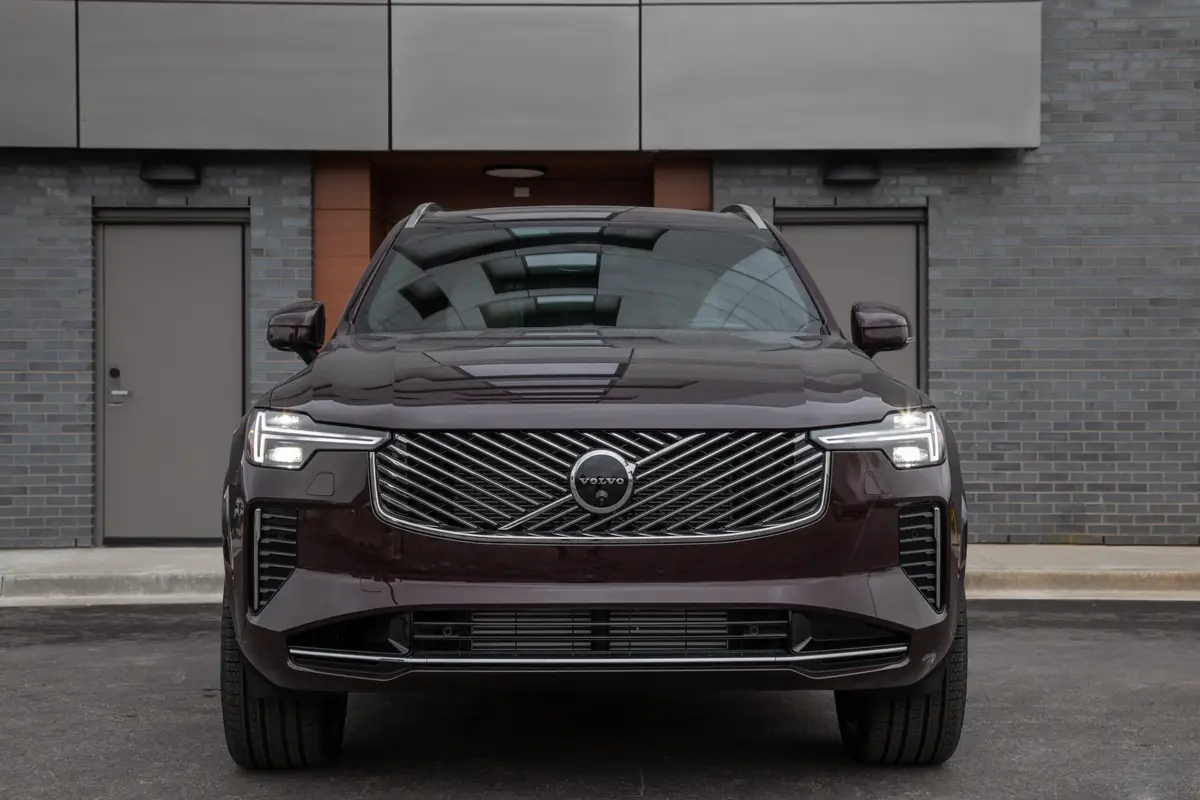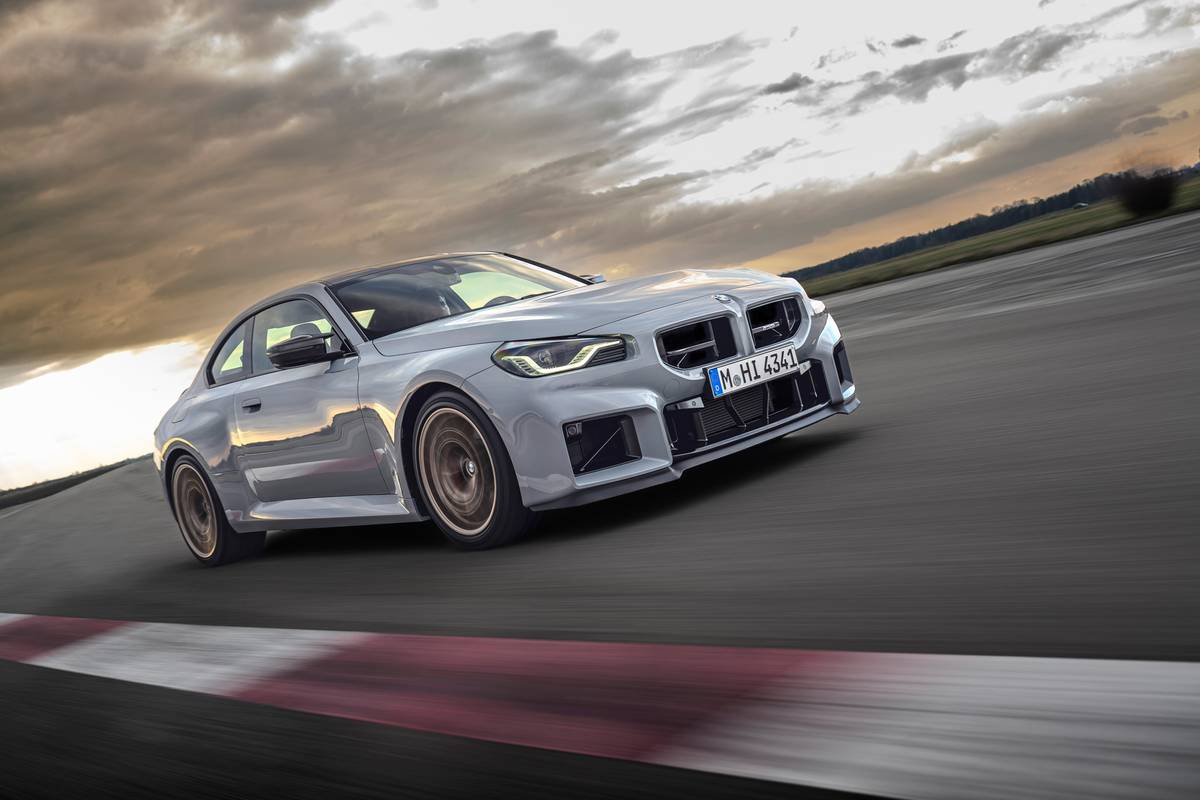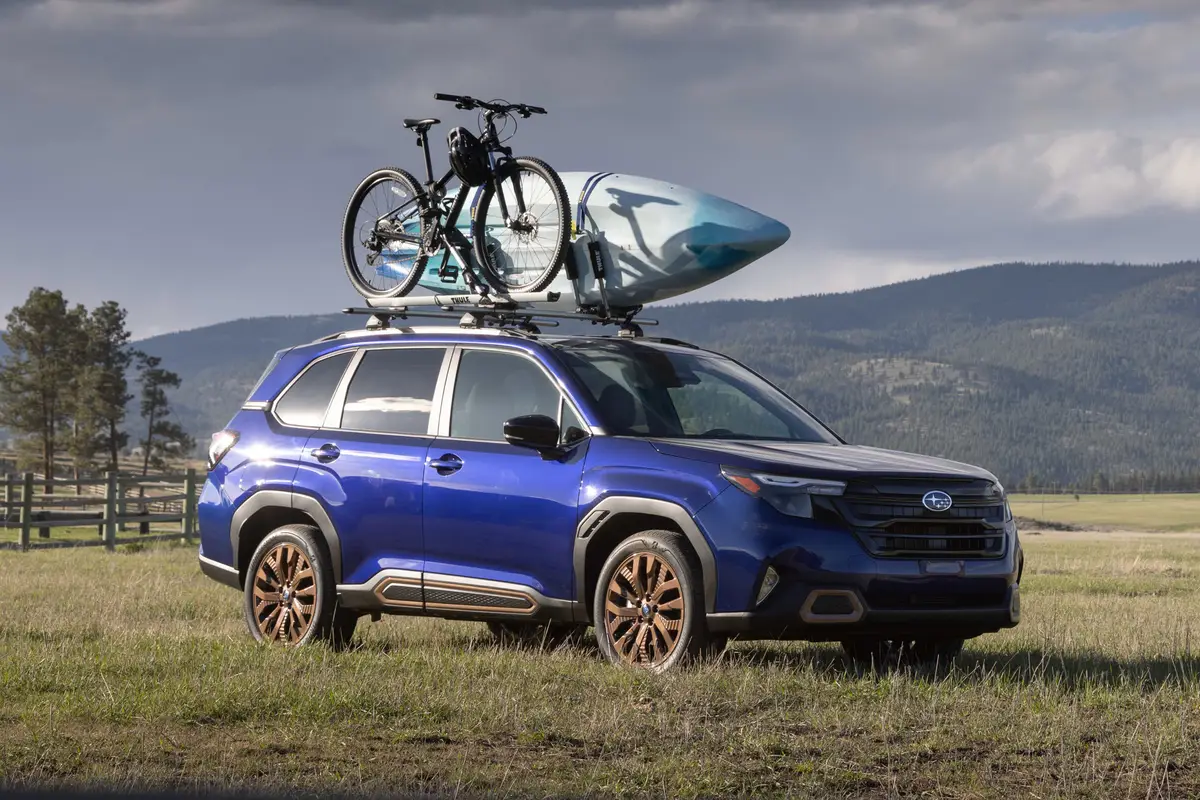The Morning Call and Mcall.com's view
Try this one on your friends: Tell them about a sports coupe that has the lowest coefficient of drag of any production car in the world. A little bit more interesting, but, still, nothing to get wildly excited about. Then, mention that it also has on-demand four-wheel drive, height-adjustable air suspension, a dashboard that defines high tech, a gaggle of gadgets and a roomy interior – and that should get their interest. Then tell them the car is made by Subaru. They’ll probably look at you as if you’re smoking your hair.
The Subaru XT Coupe is that kind of car. It is almost as if the designers were forced to watch Star Wars for a year, then locked in a video arcade for another six months. It also gives the impression that at any moment it would transform itself into a giant robot.
And all of this from a company that until not too long ago made practical but rather homely and boring little cars.
Here is a car that could very well be the ultimate toy. And I would guarantee one thing, you won’t get bored with this one too fast. There are so many switches, push buttons and levers to work, it would take a couple of weeks just to remember where everything is. In fact, here’s one car that really requires a check-out flight before going solo.
All of this should probably lead to one burning question: ”Why?” As the cliche goes, ”why not?”
The XT is not only the wildest car to come out of Subaru, it is one of the wildest cars to come from any automaker – regardless of national origin. But apparently Subaru never forgot its roots, because this car can be quite practical – or as practical as a sports coupe can get.
First to basics. The test car was a 4WD Turbo 5-speed model. This is the top XT model, which is also available as a front-wheel drive model with non- turbo engine, or a front-wheel drive with turbo engine. Also there is a choice of 5-speed or automatic transmissions in all configurations. The 4WD Turbo has a wheelbase of 97.1 inches; length, 175.2 inches; width, 66.5 inches; height, 52.6 inches, and curb weight, 2,610 pounds. (The front-wheel drive version is slightly lower and a bit lighter in weight).
Interior room isn’t bad at all. Driver and passenger sit in high- bolstered, sports-type seats. The driver’s seat also has a height adjuster and variable lumbar support as well as fore-aft movement and seatback rake adjustment. There’s a unique telescopic/memory-tilt steering column with move- along switch modules. The modules sort of look like the head of a hammerhead shark with the controls being where you would expect to find the eyes. However, unlike what results from sticking your fingers in the eyes of a hammerhead shark (an experience best avoided), your fingertips operate controls for lights, wiper, heater, air conditioning and cruise control. Since the modules move with the steering wheel, the switches will always be at the fingert ips. This, unfortunately, is no guarantee you are going to hit the right switches.
The test car’s electronic dashboard, even in a car full of surprises, was something to behold. First time I saw it I was ready to put a quarter in a slot. It is not only electronic, not only digital, but three-dimensional. The tachometer and boost gauge are triangular bar gauges that ”come at you” from a central vanishing point, fuel level and engine temperature are displayed in 3D graphic blocks and a graphic representation of the vehicle moves up and down as the air suspension system changes ride height. Then, of course, there is the obligatory trip computer.
Another interesting dash feature – if you can stand another one the key to the alarm system, which means that when the vehicle exceeds 55 mph, an eardrum-splitting buzzer goes off. I mean this is noisy. I wouldn’t doubt it could cause a permanent hearing loss if ignored. The alarm can be stopped by turning its ke off or dropping to 55 mph. Hence, teen-age readers, the daddy key nickname.
The manual shift lever looks like the joystick from a fighter plane (or, again, a video game machine). About the only difference is that the red ”trigger” switch operates the four-wheel drive system and not the guns. But somehow you get the feeling that if you hit the red button, the car in front of you will disintegrate (a feature that would probably sell).
Rounding out the interior, there’s a back seat that is perfectly suitable for hosting small children or holding packages. This back seat, however, folds down and gives access to the trunk. Quite practical. But all of the XT’s interior high tech stopped at the pop-up sunroof. This large panel (the biggest removable sunroof I have ever seen) was a real squeaker. I tried four times to get it seated right but to no avail. It just kept squeaking away.
The test car was a decent-handling car, although I would expect the front- wheel driver version to be a little nimbler. But, no big surprises – good or bad. The test car had four-wheel independent suspension featuring air springs on each corner and anti-sway bars front and rear. An on-board computer inflates or deflates the air springs to keep the ride height constant, no matter what the load. This should be good news for fishermen who now won’t have to worry about loading too many fish in the car and offsetting the balance. There is also a ”high” mode – about 1.3 inches higher than the normal ride height – controlled by a dashboard-mounted height adjustment button. In addition to giving the car extra ground clearance, the high mode also allows the shock absorbers to operate at a firmer setting. But, as by this time you should suspect, there is more. When in the high mode, the car will automatically lower to its normal ride height above about 50 mph. Apparently, Subaru engineers didn’t want anything to interfere with the car’s slippery aerodynamics.
The on-demand four-wheel drive system is just that: You push the button and you are in four-wheel drive. But why 4WD in a sports coupe? Obviously, for better traction on slippery roads. The XT’s system is really not designed for dry highways but for rain, snow, ice and, to some extent, dirt roads. As you can see, here’s where the high mode would really come in handy. Also, the XT is not an off-the-road runner. But, even as you are reading this, there will probably be XT 4WD owners bouncing their vehicles over fields and climbing mountains – or at least trying to.
The XT’s turbocharged horizontally-opposed four-cylinder engine features overhead cams (one for each two-cylinder bank), multi-port fuel injection and measures 109 cubic inches (1.8 liters). It is rated at 111 horsepower at 4,800 rpm and 134 foot pounds torque at 2,800 rpm. This is good power for a vehicle this size, so, not surprisingly, performance is quite good. If you mani pulate the five-speed manual right, you should go from 0-60 mph in a little less than 10 seconds. There is the usual turbo lag at lower rpm but once you get the revs up – and are in the right gear – it moves out. The five-speed shifts very smoothly. And, as with all manual transmission-equipped Subarus, the test car had a ”hill-holder.”
The hill-holder is not a new idea – Studebaker had it back in the 1930s – but I’ve always considered it one of the most practical devices for a car with a manual transmission. I will stop a little short of saying it should be federally mandated, but I am still amazed that every other car manufacturer doesn’t offer it. In brief, the hill-holder holds a car on a hill, or steep grade, without the driver having to keep his/her foot on the brake pedal or use the emergency brake. For example, say you come to a red light on a hill – one of the most dreaded moments for a person learning to use a manual transmission and no great thr ll for someone who is experienced with one. Don’t panic, don’t worry. Just engage the clutch, press the foot brake and put the car in low gear. Now remove your foot from the brake pedal. The car will stay right there, leaving the right foot free to operate the accelerator. Very neat, very sweet.
Fuel mileage was quite good for a car with sporting lineage. The test car averaged 23 miles per gallon for city driving and 27 mpg over the highways.
Price for the XT 4WD 5-speed is getting up there a bit but it is by no means outrageous. This model has a base of $13,589 ($9,899 for the GL 2WD coupe and $3,690 for the turbo 4WD package) and includes all of the equipment mentioned plus a bunch of other stuff. Other expenses for the test car included: metallic paint, $69; freight, $246, and dealer prep, $129. Total price was $14,033. If you really want to get basic, the base car, a 2WD DL model, goes for $8,264.
Latest news



